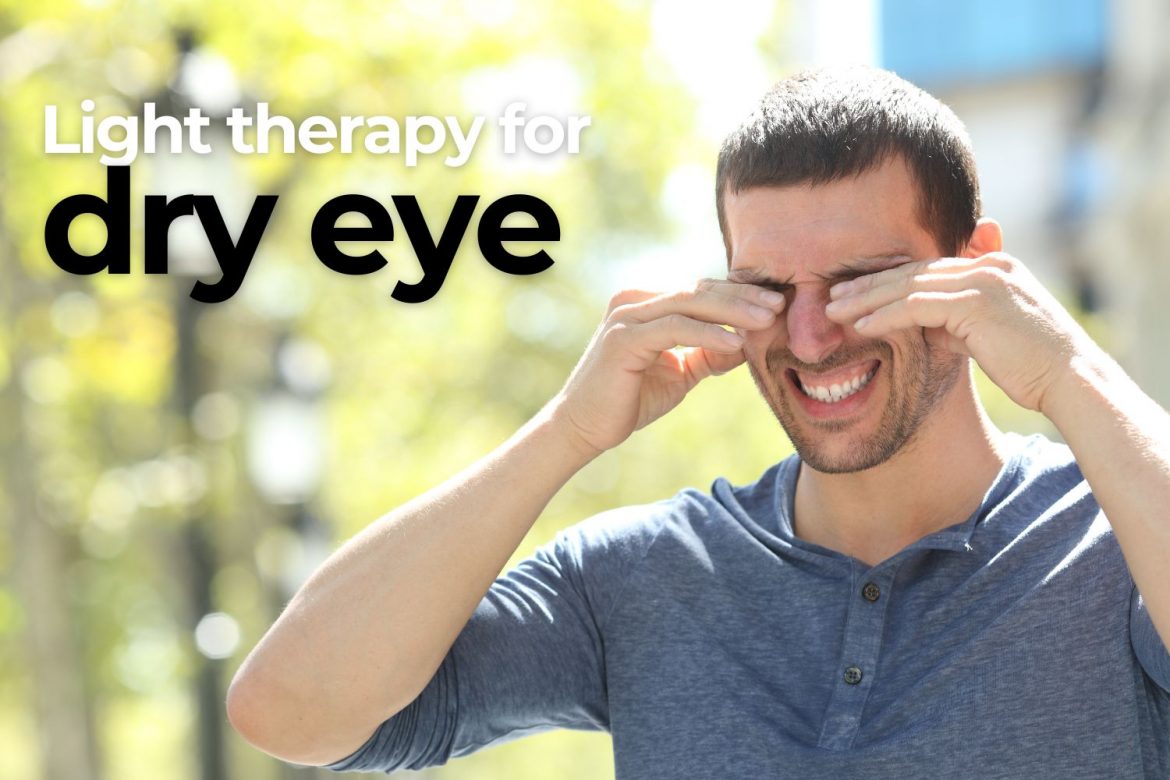![]()
Dry eye is a disorder of the tear film due to tear deficiency or excessive evaporation.
The most common reasons for dry eye include age, digital device use, contact lens wear, and the use of medication. The most common symptoms are itching, inconsistently blurry vision, redness, watery eyes, grittiness, burning, and eye fatigue.
A dry eye diagnosis is usually made from a patient’s dry eye symptoms, and the signs present on the front of the eye, confirmed through specific tests. Dry eye disease can be frustrating for both the patient and doctor because it’s considered chronic. The symptoms don’t always match the appearance of the eye that your eye doctor sees. It may require life-long treatment.
Types of dry eye
85% of all dry eye disease is considered evaporative and is caused by a dysfunction of the meibomian glands. With this condition, the lacrimal gland doesn’t produce enough tears, or the tears evaporate too quickly.
The lacrimal gland lubricates the eye’s surface by producing the watery part of the tear film, and the meibomian glands produce the oil that flows into the eye to balance the tear film.
Light therapy for dry eye
Light therapy as a treatment for dry eye has evolved over the last decade. Laser therapy treats the evaporative type of dry eye by improving the function of the meibomian glands. These glands are located along the top and bottom eyelids, near the eyelashes, and their purpose is to produce oil to balance the tear film. If they do not function correctly, the tears evaporate off the surface quickly resulting in dry eye.
Light therapy may be recommended when treatments such as over-the-counter dry eye relief lubricants are unsuccessful. Research shows that light therapy is safe and effective, with no serious adverse effects reported with either procedure type.
There are two types of light therapy: intense pulsed light (IPL) and low-level light therapy (LLLT). Both types of therapies work differently but can be used together for a synergetic approach and improved outcomes. The Eye-light device by Topcon, introduced in early 2023, combines both forms of treatment.
Intense pulsed light (IPL)
IPL works best on patients with facial and/or ocular rosacea, who often present with MGD and resultant dry eye disease. Gentle pulses of light are used to target the skin around the eyes.
During treatment, oxygen-carrying hemoglobin in the red blood cells are thought to absorb light from the IPL device and the body converts this light into heat to destroy tiny blood vessels and reduce both inflammation and congestion.
It’s also possible that light might warm the eye area, unclog blocked meibomian glands, and destroy the eyelid bacteria that clogs glands.
IPL is an in-office procedure and not approved for at-home use. The patient is typically treated at least four times over the course of several weeks.
Certain wavelengths are used to treat specific skin and eyelid conditions based on the patient’s skin type and the depth of the treatment. The patient’s skin type is determined by using the Fitzpatrick skin type scale.
IPL works best on patients with skin types I to IV. IPL may not be recommended for patients with darker-pigmented skin. Higher levels of melanin in the skin may absorb more laser energy so those with a higher degree of pigment are more likely to have skin damage and adverse effects.
Low-level light therapy (LLLT)
LLLT uses near-infrared light, which is invisible. LEDs of various wavelengths are used, most commonly, red, near infrared, blue and sometimes yellow. Lower power is used for LLL treatment. The therapy was traditionally used in dermatology to reduce fine lines and wrinkles, treat acne, manage pain, promote wound healing, and for hair restoration.
LLLT is thought to improve dry eye by improving meibomian gland function. Studies demonstrate small improvements in lid swelling, broken lid blood vessels, and meibum secretion. LLLT can be used to treat MGD, blepharitis, a chalazion, or hordeolum (stye).
Currently, LLLT is not FDA-approved for the treatment of dry eye disease, so treatment is considered off-label. The treatment typically lasts between 15 and 30 minutes; however, more study information is needed on the most beneficial light type, light concentration, treatment time, number of sessions, and time between sessions.
The cost of treatment
The cost of treatment varies by location and number of treatments but is always an out-of-pocket. Insurances including Medicare don’t currently cover the cost of therapy, but payment plans are usually offered to help.
The bottom line
Light therapy is a novel and exciting treatment option for those who suffer from MGD, rosacea, and ultimately, dry eye disease.
If early treatment options like over-the-counter eyedrops and prescription medications fail to improve your symptoms, light therapy may be recommended by your doctor. Light therapy typically requires several treatments but has proven to improve patient symptoms. Treatment is easy, and patients experience no adverse effects.

